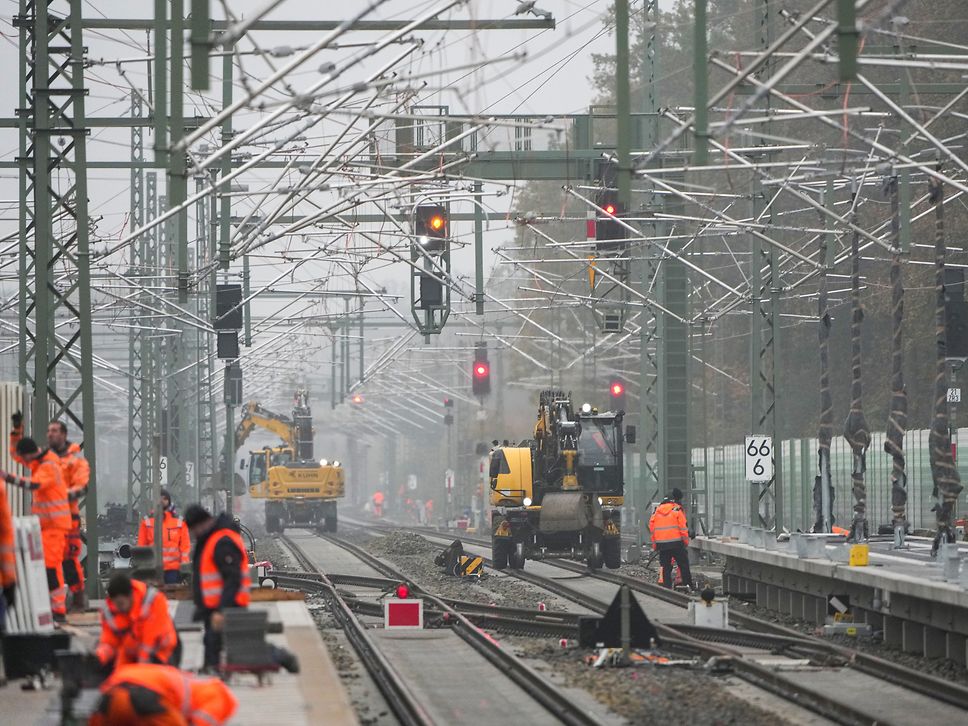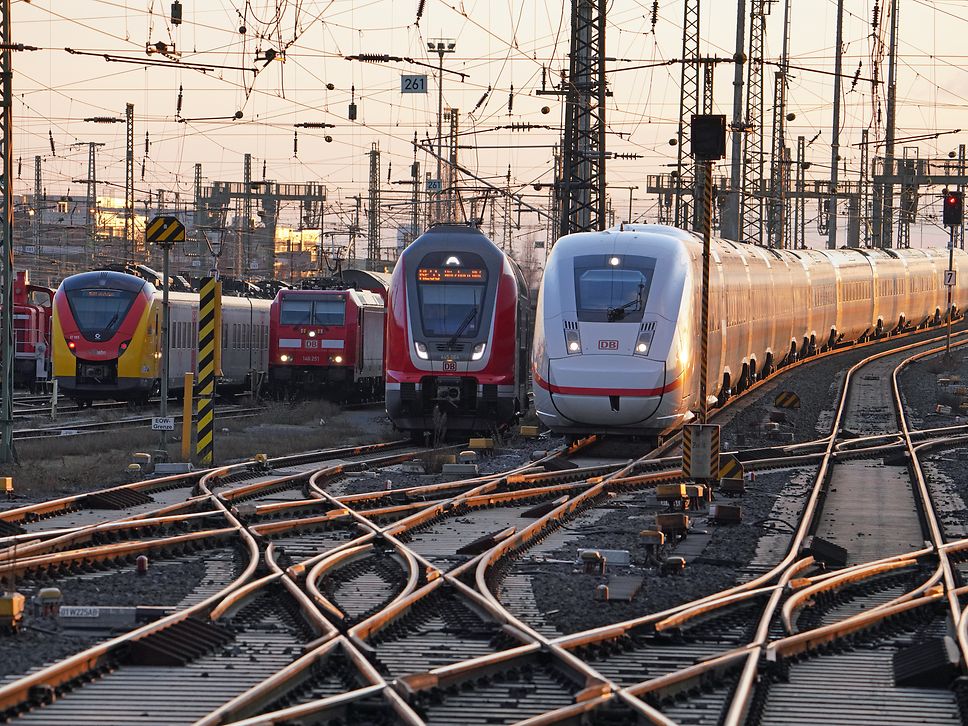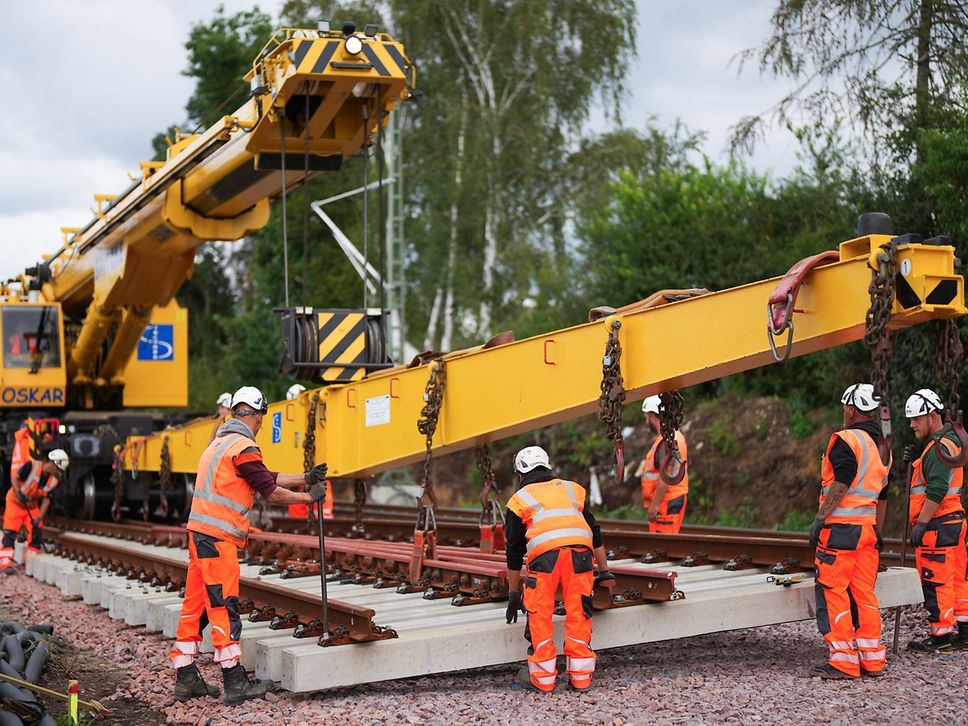Article: Our S3 program will boost DB's rail performance, benefitting customers
Efficient, reliable, on-time rail service – that is the goal of Deutsche Bahn's S3 program. We face challenges on several fronts, and we launched S3 to get our company back on track and ensure that we can deliver effective rail service for our customers. S3 (the "S" stands for Sanierung, the German word for "turnaround") is an overarching program that will restructure the DB Group over the coming three years. It will focus on turning three aspects of our business around: infrastructure, rail operations and profitability.
The aim of S3 is to significantly improve the customer experience and secure the financial viability of the DB Group. In a nutshell, this will mean attractive rail connections with more on-time trains and fewer disruptions to service. The Supervisory Board has approved our roadmap for the S3 turnaround.
Dr. Richard Lutz, the CEO of DB, has this to say about S3:
"We are moving full speed ahead to execute S3 – in our infrastructure, in our operations and in the profitability of our business. We recently completed our general overhaul of the Riedbahn rail line between Frankfurt and Mannheim. This project showed that dedicated execution, coupled with financial stability, is a recipe for success. We are bringing the same kind of dedication and discipline to bear with S3. Our success on S3 will be a measure of our success more broadly."
The S3 program has three pillars: infrastructure, operations and profitability. A total of 20 projects are now underway in those pillars, and DB representatives meet with the German government regularly to discuss progress on each. Going forward, we will submit a set of KPIs to our Supervisory Board and to the German Transport Ministry each quarter to illustrate progress made and areas where countermeasures are needed. In other words, progress on S3 will be trackable at all times, making it possible to identify early on what is working and what needs to be done differently.
Reversing the trend in infrastructure
The first S3 pillar is infrastructure. Our rail network is too old, too fault-prone and too congested – and the impact on rail service can be clearly seen. The infrastructure pillar of S3 aims to rapidly overhaul our existing infrastructure, because that will be both the key to higher operating quality and the most important factor for rail growth. Our infrastructure pillar will include general overhauls of some 1,500 kilometers of track, covering all the general overhauls announced for the period from now to 2027. We will also make extensive additional improvements, such as replacing fault-prone components throughout our infrastructure – and a total of 200 old interlockings – and modernizing 400 stations.
Stabilizing on-time rates
The second S3 pillar is operations. Stabilizing the timetable will be key in stabilizing operations. To this end, we will transform our entire construction and maintenance system using an approach known as construction cycles. The goal is to build slots for construction work into the timetable from the start and then assign any actual construction work that becomes necessary to those built-in slots. This is the opposite of how things are done today, where existing timetables have to be adjusted whenever the need for construction work arises. We will also focus on selected measures to relieve congestion at the five most important hubs in our German network: Berlin, Hamburg, Cologne, Frankfurt and Munich. And we will improve the quality and availability of our rolling stock.
Securing financial viability
The third S3 pillar is profitability. We will implement a series of measures to make the DB Group stronger and more effective. The aim is to lower DB's personnel expense ratio – personnel expenses divided by the sum of revenues and work performed internally – to approximately 50%. Our focus to this end will be on reducing our administrative staff at the corporate and operational level. Layoffs are not planned; the employment safeguards in place at DB still apply in full. As we make these adjustments, we will ensure that we have the staff necessary to offer effective rail service, which is why many operational departments will continue with a major push to hire new staff.
Additional measures to improve profitability will include adjusting our capital expenditure curves relative to the levels previously budgeted. The goal across everything we do in this pillar will be to make DB much more profitable than it has been.
Strong Rail, our Group strategy
The steps we are taking as part of our S3 program will return DB's rail performance to effective levels and lay a stable foundation for further growth in line with our Strong Rail strategy.
The long-term strategic goals of Strong Rail remain unchanged: it is our aim dovetail the economic, social and environmental dimensions of our business. Sustainability is anchored in the DB Group's guiding principles and is an integral part of our DNA. Strong Rail is about expressly acknowledging our responsibility to society as Germany's largest mobility company. We will do our part to help achieve the key transport and climate policy goals that have been set, and we see ourselves as a fundamental building block in the decarbonization of transport in Germany.
S3, with its goals of turning our infrastructure, rail operations and profitability around, complements our Strong Rail strategy. Both S3 and Strong Rail aim to restore rail performance, significantly improve the customer experience and secure the financial viability of the DB Group.


